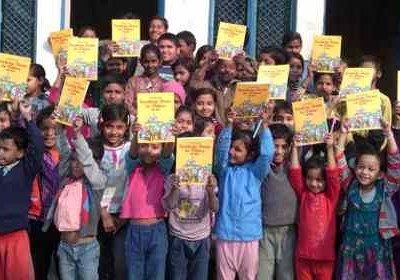
India’s Youth Account for 83% of Unemployed Workforce: ILO Report

Students of a government school in Delhi cross high walls and barbed wires to abscond from the school. School education is bad and teachers have no control on students. Photo: Rakesh Raman / RMN News Service
India’s Youth Account for 83% of Unemployed Workforce: ILO Report
Commenting on employment in India, the report says that it is dominated by poor-quality employment in the informal sector and informal employment.
A report by the International Labour Organisation (ILO) and the Institute of Human Development (IHD) reveals that India’s youth account for almost 83% of the unemployed workforce.
The report “India Employment Report 2024: Youth employment, education and skills” released on March 26 adds that the share of youngsters with secondary or higher education in the total unemployed youth has almost doubled from 35.2% in 2000 to 65.7% in 2022.
Commenting on employment in India, the report says that it is dominated by poor-quality employment in the informal sector and informal employment. Also, employment in India is predominantly self-employment and casual employment.
According to the report, nearly 82% of the workforce engages in the informal sector, and nearly 90% is informally employed. Due to the nature of employment growth since 2019, the share of total employment, which is in the informal sector and/or in informal employment, increased.
The report further states that wages and earnings are stagnant or declining. While wages of casual labourers maintained a modest upward trend during 2012–22, real wages of regular workers either remained stagnant or declined.
Self-employed real earnings also declined after 2019. Overall, wages have remained low. As much as 62% of the unskilled casual agricultural workers and 70% of such workers in the construction sector at the all-India level did not receive the prescribed daily minimum wages in 2022, the report asserts.
The report argues that digitalization and introduction of new technologies are changing the structure of industrial employment. There has been a rapid introduction of digitally mediated gig and platform work, which are algorithmically controlled by the platforms and have brought about new features in control of the labour process. Increasingly, according to the report, platform and gig work have been expanding, but it is, to a large extent, the extension of informal work, with hardly any social security provisions.
The ILO analysis shows that unemployment rates among youths showed a disturbing trend, increasing as the level of education rises, with the highest rates among youths with a graduate or technical training degree.
In particular, the concern is the disproportionately higher unemployment rate among youths with a technical degree or diploma, which has surpassed even the rate among youths with a general graduate degree.
What is even more alarming is that these rates consistently have been on the rise, the ILO report says, adding that unemployment rates among highly educated youths from lower-income families are a particular cause for concern because they face equal or even higher unemployment rates than their counterparts from higher-income families.
Poor Quality of Education
At present, the education in Indian schools is so meaningless that it is not required at all in any job market. After wasting at least 12 years in schools, the students are totally confused and not equipped for higher education needed for employment.
The drudgery of education also causes mental retardation and a feeling of inferiority complex among the students. Since a lot of verbal garbage is stuffed into the burdensome syllabuses, the education also challenges the biological limits of students who are forced to blindly cram instead of understanding the relevant subjects.
About 99% of students do not need to learn the prevailing subjects such as math, science, social science, and the obsolete computer applications. The others who want to take up professions related to these subjects are also not required to learn them like this because today’s professions are driven by advanced computer applications and systems driven by artificial intelligence which generate this knowledge for the professionals working in these fields.
For example, no student is required to learn polynomials, triangles, and circles. Similarly, they can ignore the study of metals, rivers, geography, and the Russian revolution. If they need any of this knowledge in their jobs, they can get it instantly with a single click of mouse on their computers.
As the students, parents, teachers, and policy makers are not willing to change the useless subjects, students are suffering as they are not getting jobs. The employers do not need job seekers who have studied any of these irrelevant topics in their schools or colleges.
Rather, they need workers who are fully skilled in modern areas of studies and who are trained to handle any work during their employment even if they have not learnt it during their years in schools and colleges.
You can click here to read a research report on Indian education and click here to watch a related video on RMN YouTube Channel. The report is also given below.












